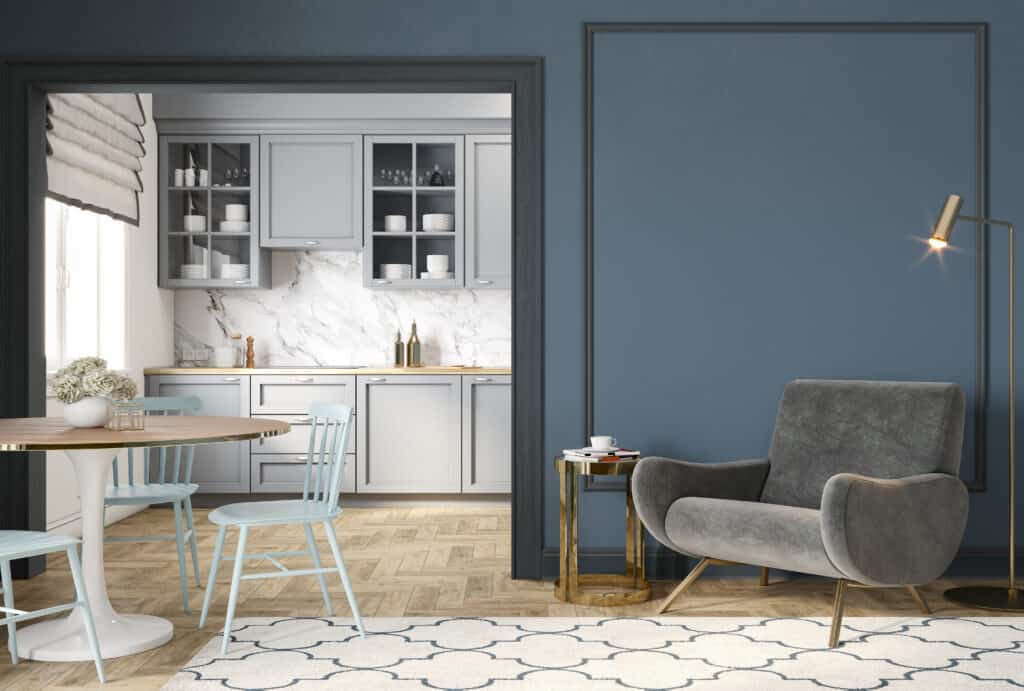As the artists of the living space, creating beautiful and functional environments that reflect your clients’ personalities and needs, you often accumulate substantial materials, tools, and samples in your creative process. To keep your design studios organised and maintain your productivity, you must be reliant on smart inventory management and storage solutions. This article explores the challenges interior designers face in inventory management and provides valuable insights into how they can optimise their processes, including the use of storage solutions like self-storage and secure storage facilities.
The Importance of Inventory Management
Effective inventory management is essential for interior designers for several reasons:
- Cost Control: Poor inventory management can lead to overstocking, resulting in unnecessary storage costs or understocking, which may lead to project delays and increased expenses.
- Customer Satisfaction: Keeping track of your inventory ensures that designers can deliver on time and meet their clients’ expectations. This, in turn, enhances customer satisfaction and fosters repeat business.
- Optimised Resource Allocation: Proper inventory management allows designers to allocate resources more efficiently, reducing waste and improving overall project profitability.
- Business Growth: Well-organised inventory systems enable interior designers to take on larger projects and confidently expand their client base.

Challenges in Inventory Management for Interior Designers
Interior designers often face unique challenges when it comes to inventory management:
- Diverse Product Range: Interior designers work with various items, from furniture and fabrics to lighting fixtures and accessories. Managing this diverse range of products can be overwhelming.
- Fluctuating Demand: Demand for certain materials or products can vary significantly between projects, making it challenging to predict and maintain appropriate inventory levels.
- Seasonal Trends: Interior design trends change with the seasons, necessitating frequent updates to inventory and design catalogues.
- Space Constraints: Many interior designers operate from small studios or home offices, limiting their available storage space.
- Security and Protection: High-value inventory items must be stored securely to prevent theft, damage, or deterioration.
Inventory Management Strategies for Interior Designers
- Categories and Prioritise: Divide your inventory into categories such as furniture, fabrics, lighting, and accessories. Prioritise items based on their importance and frequency of use in your projects.
- Centralised Inventory Management Software: Invest in inventory management software designed for interior designers. These tools can help you track items, manage orders, and generate reports.
- Real-Time Tracking: Utilise barcode or RFID systems to track items in real-time. This technology streamlines inventory checks and reduces the likelihood of errors.
- Supplier Relationships: Cultivate strong relationships with suppliers to access accurate lead times and ensure a steady supply of materials when needed.
- Just-in-Time Inventory: Consider implementing a just-in-time inventory system for materials with unpredictable demand. This reduces storage costs and minimises waste.
- Regular Audits: Schedule regular inventory audits to identify discrepancies, damaged items, or obsolete stock. This keeps your inventory accurate and up-to-date.
Storage Solutions for Interior Designers
- Self-Storage Facilities: Self-storage units offer a convenient and cost-effective solution for interior designers with limited studio space. They provide a secure and easily accessible location to store excess inventory, samples, and equipment.
- Climate-Controlled Storage: If you work with delicate materials like textiles or artwork, consider climate-controlled storage units. These units maintain stable temperature and humidity levels, ensuring the preservation of your inventory.
- Secure Storage Facilities: Choose storage facilities with robust security measures, including surveillance cameras, access controls, and alarms. This helps protect valuable inventory items from theft and damage.
- Inventory Management in Storage: Implement an organised system within your storage unit, such as shelving, bins, and labelling, to easily locate and retrieve items when needed.
- Digital Inventory Records: Maintain digital records of the items stored in your self-storage units. This allows you to keep track of inventory even when it’s off-site.

In Need of Storage Solutions?
Effective inventory management and storage solutions are essential for interior designers to thrive in a competitive industry. Interior designers can streamline their operations, reduce costs, enhance customer satisfaction, and ultimately grow their businesses by implementing the right strategies and utilising fully managed storage solutions such as secure storage facilities. With a well-organised inventory and access to secure storage options, interior designers can focus on what they do best: creating stunning and functional interior spaces for their clients.
Edwards Removals offers procurement, installation, and storage services to interior designers, galleries, and museums. Our highly skilled Move Managers are available at all times to assist with the planning and execution of adaptable solutions to suit your business demands and design projects. If you’re in need of secure storage solutions for your inventory, contact us today.